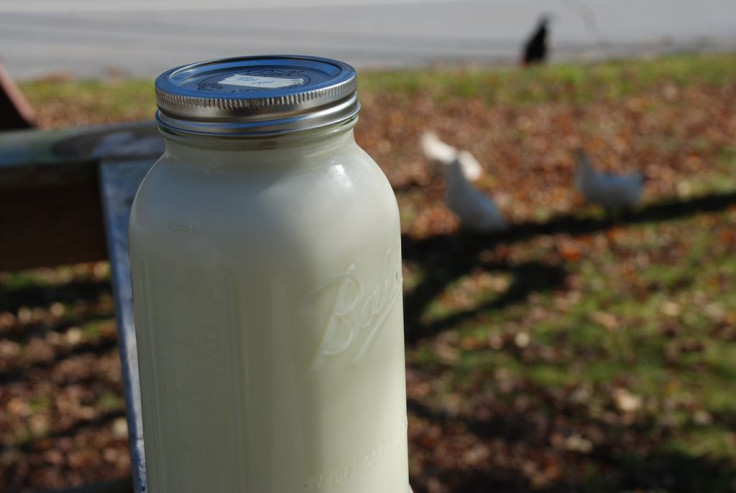Food Poisonings From Raw Milk, Poultry Rise

A young mother throws her station wagon into "park" in the dooryard of a dairy farm in bucolic Vermont, the green hills dotted with black and white Holsteins, some brown Jerseys too. In the milk room, she and her children fill gallon-jugs with raw milk straight from the spigot, laughing when they cannot shut the valve — raw milk spraying everywhere. Denim-clad farmers are nowhere to be seen.
Nearly 3 percent of American's still drink raw milk, particularly in rural areas like Vermont. Alternatively, pasteurizing milk, a process developed more than a century ago by French chemist and microbioligist Louis Pasteur, reduces 99.999 percent of the amount of microbial pathogens in cow's milk. The Centers for Disease Control and Prevention says raw milk is 150 times more likely than pasteurized milk to cause disease, with no greater nutritional benefits.
Disease outbreaks from campylobacter, a bacterium commonly found in raw milk, rose by 14 percent in the United States during the past 5 years, CDC said. Other foodborne illnesses, like those caused by salmonella and E. coli, have held steady.
"We do see some troubling trends that we have seen in recent years and are continuing to address at FSIS," said Dr. David Goldman of the USDA Food Safety and Inspection Service.
In a survey of 10 states, CDC found campylobacter responsible for more than a third of foodborne poisonings and 10 percent of deaths, though the severity of foodborne illnesses varies greatly. The rise in campylobacter infection rates remains troubling given the government's lack of an explanation: "[T]here is less campylobacter in the products we regulate."
Moreover, regulators are finding less of the bacteria in food products under their purview, like whole turkeys and whole chickens — as opposed to unregulated raw milk. The U.S. in 2011 instituted new industry standards to reduce the number of foodborne illnesses from campylobacter and salmonella by 25 million cases. Aside from the aforementioned little buggers, recent reports showed that 81 percent of all turkey, 69 percent of pork chops, 55 percent of ground beef, and 39 percent of chicken meats contained antibiotic-resistant "superbugs."
The Foodborne Disease Active Surveillance Network reported last year a total of 19,531 infections, 4,563 hospitalizations, and 68 deaths connected with such infections in America.
Published by Medicaldaily.com



























